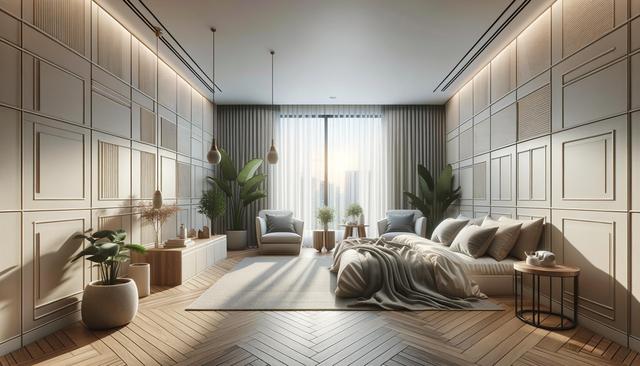What Are PVC Wall Panels?
PVC wall panels are decorative wall cladding solutions made from polyvinyl chloride, a lightweight and durable plastic material. These panels are designed to replace traditional wall surfaces such as paint, tiles, and wallpaper. Available in a range of designs, finishes, and sizes, PVC wall panels offer an easy and efficient way to enhance interior spaces. They are commonly used in residential, commercial, and industrial settings due to their flexibility and functional benefits.
PVC panels are particularly well-suited for areas with high moisture levels, such as bathrooms, kitchens, and basements, as they are resistant to water and mold. Their interlocking design makes installation quick and straightforward, often eliminating the need for professional labor. Additionally, they require minimal maintenance, making them a practical solution for busy households or commercial environments.
Advantages of Using PVC Wall Panels
One of the primary reasons for the growing popularity of PVC wall panels is the wide range of advantages they offer. These benefits make them a practical and attractive choice for both new constructions and renovation projects. Some of the key advantages include:
- Water Resistance: Ideal for damp environments, PVC panels prevent mold and mildew growth.
- Durability: Made from tough plastic, these panels can withstand impacts and wear over time.
- Low Maintenance: Unlike painted walls or tiles, PVC panels require only occasional wiping with a damp cloth.
- Easy Installation: Panels can be installed quickly without the need for complex tools or adhesives.
- Variety of Designs: Available in numerous colors and patterns to match different interior styles.
In terms of longevity, PVC panels are known to maintain their appearance for many years without fading or peeling. This makes them a cost-effective solution in the long run, particularly in spaces that are prone to wear and tear.
Common Applications and Use Cases
PVC wall panels are highly versatile and can be used in a wide range of applications, both residential and commercial. In homes, they are most commonly employed in moisture-prone areas such as bathrooms and kitchens. However, their aesthetic appeal and easy upkeep have also made them a popular choice for living rooms, hallways, and even ceilings.
In commercial environments, PVC panels are frequently used in settings such as:
- Office interiors for a clean, modern look
- Retail spaces for quick and affordable transformations
- Healthcare facilities due to their hygienic properties
- Restaurants and cafes for decorative and functional wall treatments
- Educational institutions where durability is essential
These panels are also frequently used in temporary structures or modular setups where quick installation and removal are key considerations.
Installation and Maintenance Tips
Installing PVC wall panels is a relatively straightforward process that can often be completed without professional help. Panels typically come with tongue-and-groove edges that allow them to snap together with minimal effort. For those undertaking a DIY installation, following a few simple guidelines can ensure optimal results:
- Always start with a clean, dry, and level wall surface.
- Use appropriate adhesives or screws for added stability, especially in high-traffic areas.
- Ensure proper alignment to avoid gaps or uneven surfaces.
- Seal the joints in wet areas to enhance water resistance.
Maintaining PVC wall panels is equally simple. A non-abrasive cleaner and a soft cloth are usually all that’s needed to keep the panels looking fresh. Avoid using harsh chemicals or abrasive tools, as these can damage the surface finish over time.
Environmental Considerations and Safety
While PVC wall panels offer numerous benefits, it’s important to consider their environmental impact. PVC is a synthetic plastic, and its production and disposal can raise sustainability concerns. However, many manufacturers are now adopting eco-friendlier practices, such as using recycled materials and offering recyclable panels at the end of their life cycle.
In terms of safety, PVC panels are generally considered safe for indoor use when sourced from reputable suppliers. They are non-toxic, fire-retardant, and do not emit harmful fumes under normal conditions. However, users should always check product certifications and comply with local building codes to ensure safety standards are met.
For those prioritizing environmental sustainability, it may be worth exploring panels that come with eco-certifications or those manufactured using greener practices. While not biodegradable, responsible disposal and recycling programs can help mitigate the environmental footprint of PVC products.
Conclusion: Making an Informed Choice with PVC Wall Panels
PVC wall panels present a practical, versatile, and visually appealing solution for both residential and commercial interiors. Their ease of installation, low maintenance, and moisture resistance make them especially valuable in environments where durability and cleanliness are priorities. While it’s important to weigh environmental considerations, the growing availability of more sustainable options makes PVC panels a viable choice for many. Whether you’re renovating a bathroom or upgrading an office space, PVC wall panels offer a functional and stylish alternative to traditional wall coverings.


